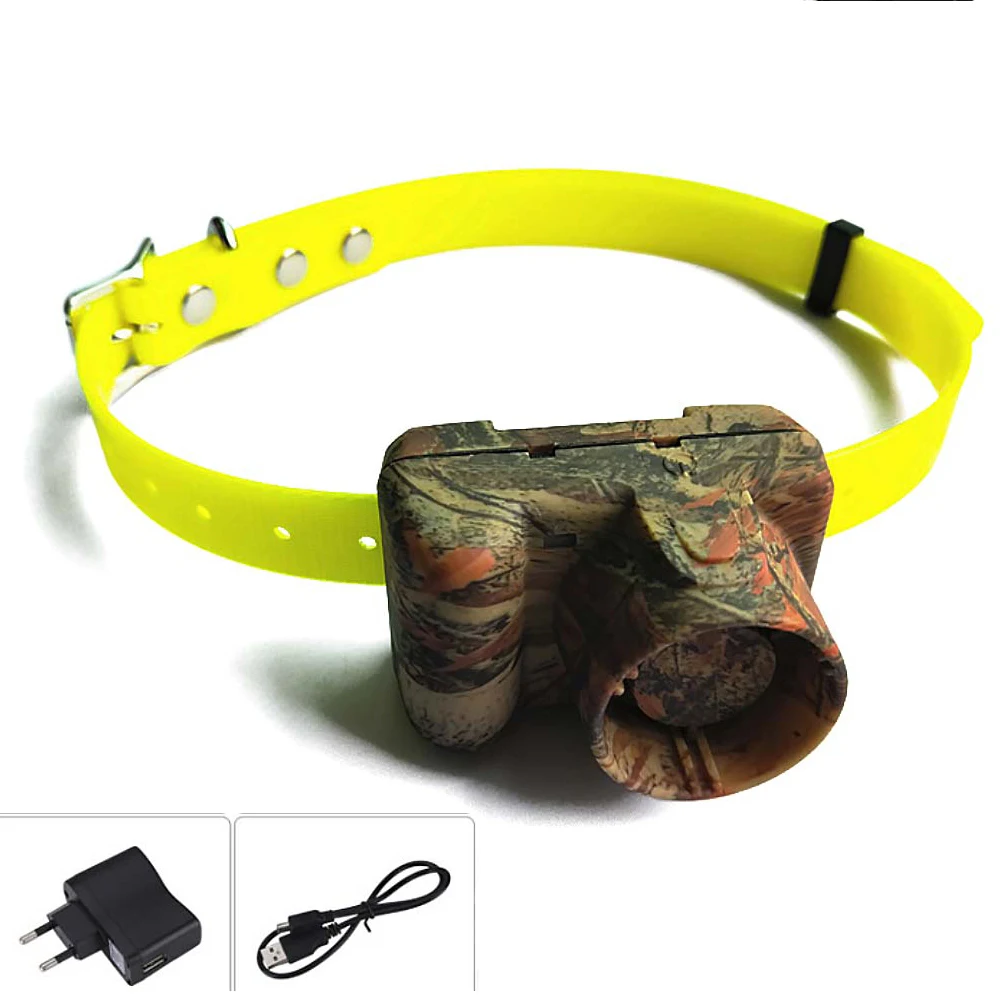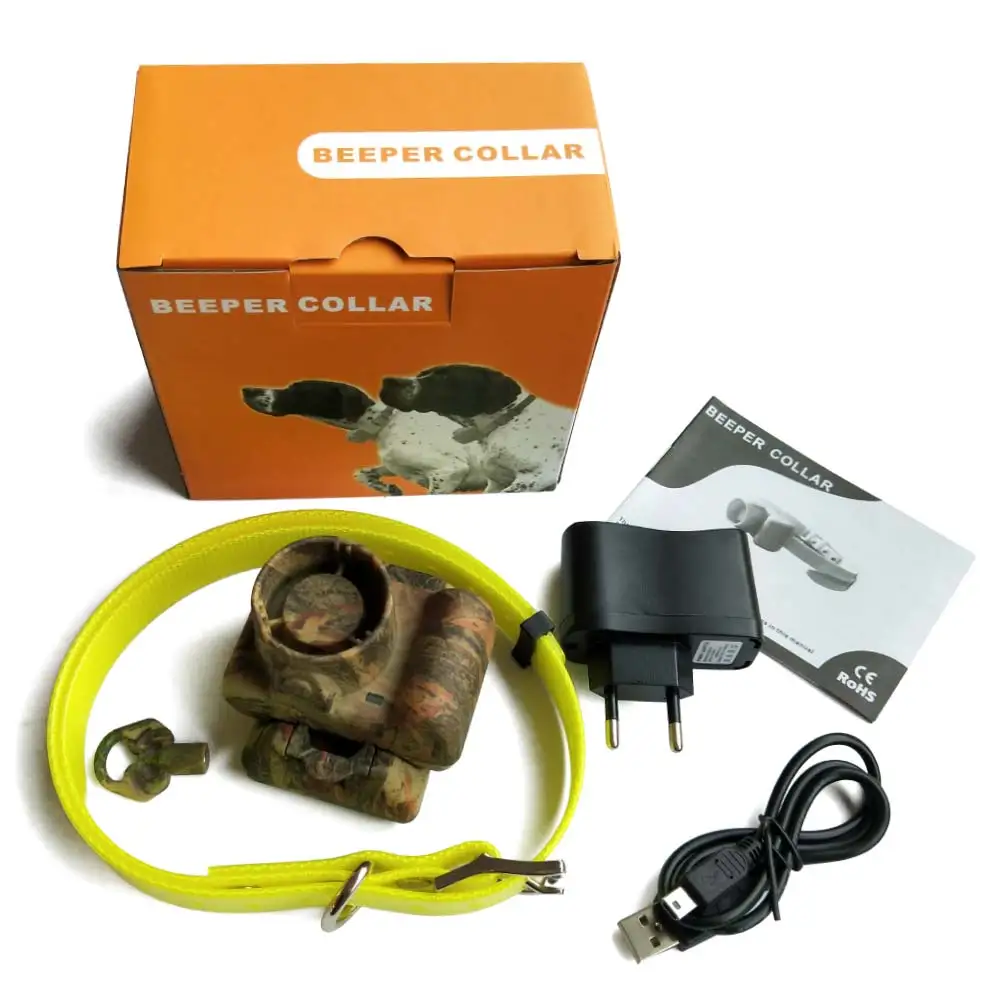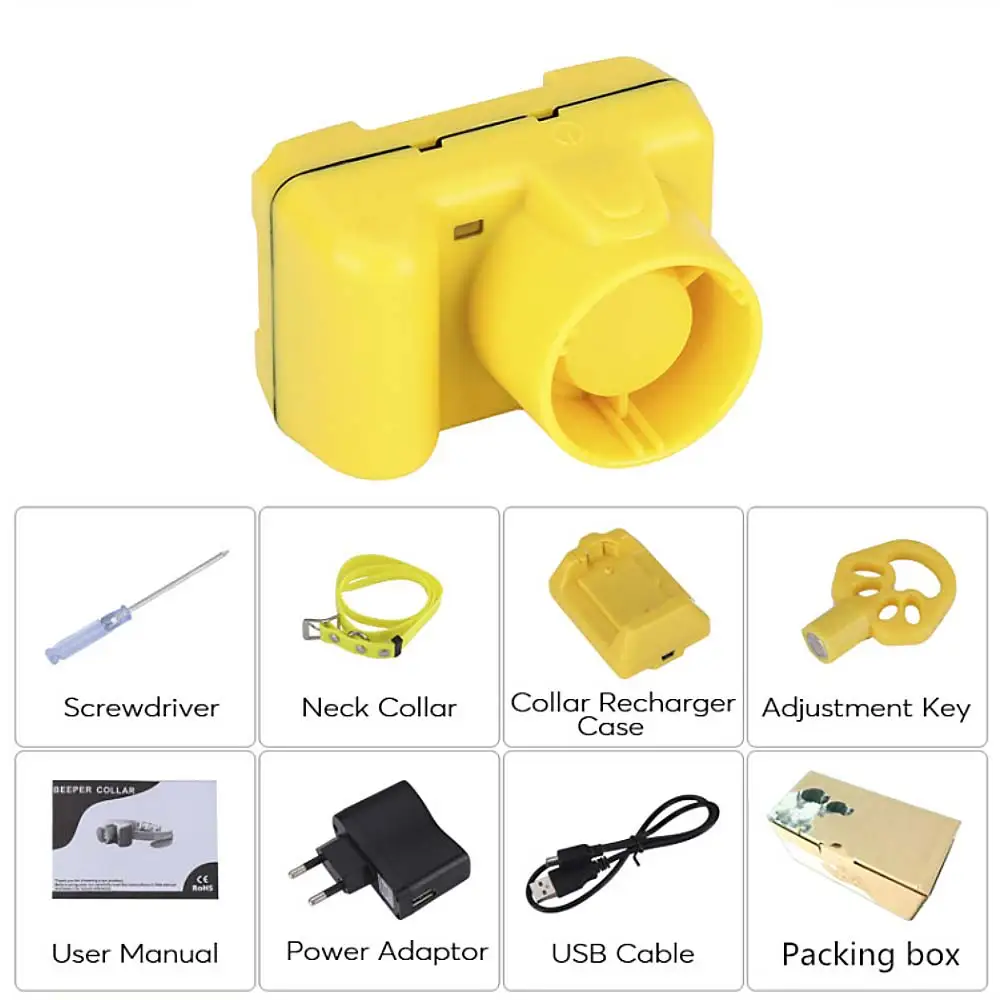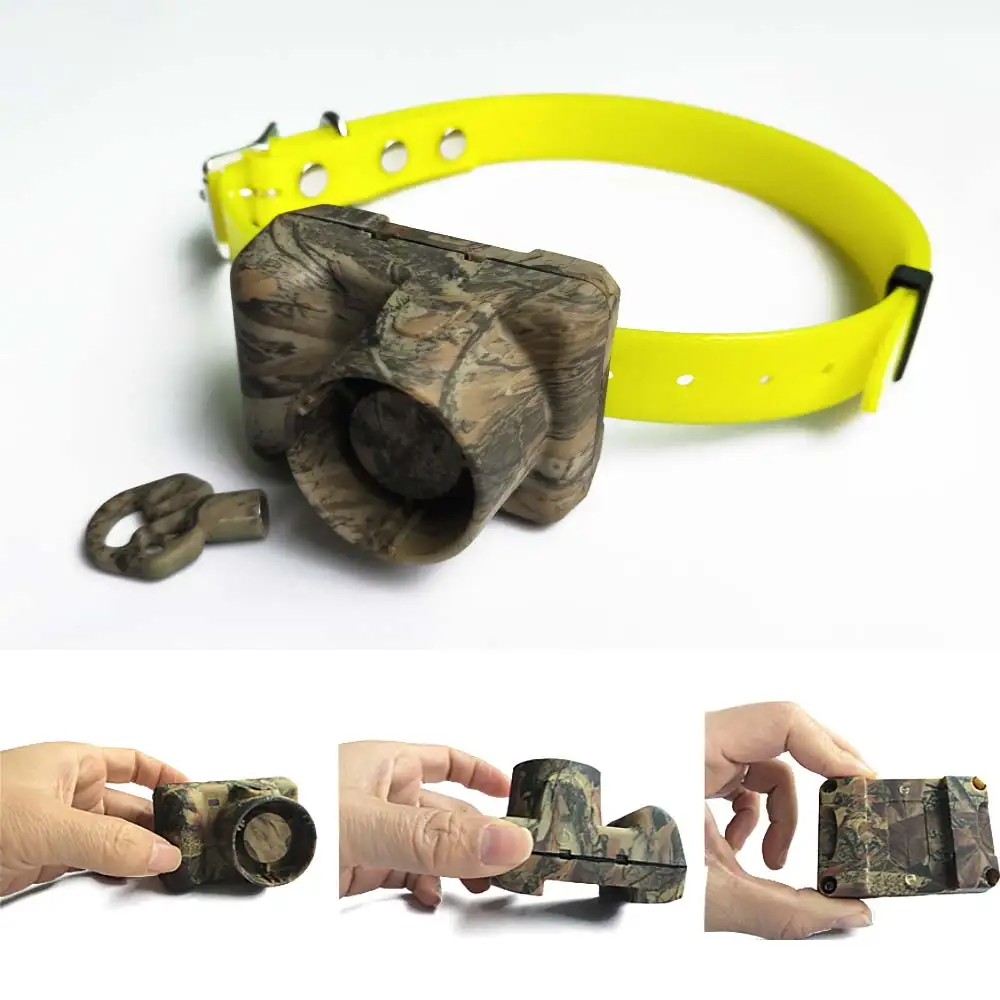Introduction
Modern dog training and behavior modification have seen numerous advancements. Among these, dog collars equipped with beep sounds have gained prominence. These collars utilize auditory signals to communicate with dogs, aiding in training and correction. They offer an alternative to shock or vibration methods, relying on sound to get the dog’s attention. However, the concept and use of dog collar beep sound also spark debates and varying opinions among pet owners and trainers. This comprehensive article explores the purpose, benefits, types, proper use, and controversies surrounding dog collars with beep sounds. By the end, you’ll have a thorough understanding of how these collars can be a tool in your pet training arsenal.

What is a Dog Collar Beep Sound?
The Basics of Beep Collars
Dog collars with beep sounds incorporate an auditory element to assist in training and behavior corrections. These collars typically emit a sharp, attention-grabbing sound that can be used to interrupt unwanted behaviors or reinforce commands.
How They Work
- Mechanism: Most beep collars come with a small speaker integrated into the device. When activated, either manually by a remote control or automatically through sensors, the collar emits a beep sound.
- Types of Beeps: The beep sound can vary in pitch, duration, and volume. Some collars allow customization to adjust according to the dog’s sensitivity and training phase.
- Activation: Beep sound collars can be activated in different ways. Some are controlled manually by the owner through a remote, while others are triggered automatically by the dog’s barking or other specific behaviors.
The basic function of these collars is to use sound as a non-invasive method to capture the dog’s attention, thus breaking its focus on the unwanted behavior.
The Science Behind Beep Sound
Scientific principles underpin how beep sounds work as an effective training tool. Dogs have acute hearing abilities, making them particularly responsive to auditory stimuli.
Key Points
- Acute Hearing: Dogs have a much broader hearing range than humans. They can hear high-frequency sounds that are imperceptible to us. The beep sound is designed to fall within this range, ensuring the dog hears it clearly.
- Conditioning: Beep collars operate based on principles of classical and operant conditioning. When used consistently, the beep can become a conditioned stimulus. The dog learns to associate the beep with a command or a behavior change.
- Attention Grabbing: The sharp, sudden nature of the beep sound is effective in catching a dog’s immediate attention. This interruption can break the cycle of unwanted behavior and redirect the dog’s focus to the owner.
- Consistency and Timing: The effectiveness of beep collars also hinges on the consistency and timing of their use. Prompt activation of the beep in response to specific behaviors ensures the dog makes the correct associations.
Understanding the science behind beep sounds helps in using these collars more effectively, leveraging dogs’ natural responsiveness to sound for training purposes.

Benefits of Dog Collars with Beep Sounds
Humane Training Method
One of the most significant advantages of beep collars is their humane approach to training. Unlike shock collars, which can cause discomfort or pain, beep collars rely solely on sound.
Key Benefits
- Non-Physical: Beep collars do not physically harm the dog. The sound is designed to be startling without causing pain or distress.
- Minimizing Stress: Reducing physical discomfort minimizes stress and anxiety in dogs. This creates a more positive training environment and can lead to better long-term results.
- Building Trust: Using humane methods fosters trust between the dog and the owner. Trust is crucial for effective training and building a healthy, cooperative relationship.
- Flexibility: Beep collars can be adjusted to suit individual dogs’ sensitivity levels. This customization ensures that the training method is appropriate and effective for each dog without causing undue stress.
Beep collars offer a humane and ethical alternative to more physically intrusive training methods, making them a preferred choice for many dog owners and trainers.
Versatility in Training
Beep collars are versatile tools that can be used in various training scenarios, making them valuable for addressing a wide range of behaviors.
Key Training Scenarios
- Barking: Excessive barking can be a challenge for many dog owners. Beep collars can be used to signal the dog to stop barking, with the beep acting as an interruptive cue.
- Recall: Training a dog to return when called is crucial for its safety. Beep sound collars can reinforce recall commands, helping dogs to associate the sound with the need to return to the owner.
- Boundary Training: Beep collars are effective in boundary training, teaching dogs to stay within a specific area. When the dog approaches the boundary, the beep can serve as a warning, helping them understand their limits.
- General Obedience: Basic commands such as sit, stay, and come can be reinforced using beep collars. The sound acts as a marker, helping the dog to understand and comply with commands more effectively.
- Behavior Interruption: For behaviors such as jumping on guests, digging, or chewing, the beep can act as a deterrent. The immediate sound interrupts the behavior, allowing the owner to redirect the dog’s attention.
The versatility of beep collars makes them suitable for various training needs, enhancing their usefulness for dog owners and trainers.
Ease of Use
Beep collars are designed with user-friendliness in mind, making them accessible and straightforward for dog owners to use effectively.

Key Features
- Remote Control: Many beep collars come with a remote control, allowing the owner to activate the beep sound from a distance. This functionality is useful for training in different environments and situations.
- Adjustable Settings: The ability to adjust the volume and duration of the beep sound ensures it can be customized to suit the dog’s sensitivity and training needs. Some collars also allow the addition of other cues, such as vibration or light, for enhanced training reinforcement.
- Automatic Detection: Some beep collars are equipped with sensors that detect specific behaviors, such as barking. These automatic functions ensure timely responses and relieve the owner from constant monitoring.
- Battery Life: Long-lasting battery life and power-saving features make beep collars convenient for regular use. Easy charging options, such as USB ports, further enhance their practicality.
- Durability: High-quality materials and construction ensure that beep collars are durable and withstand daily wear and tear. Waterproof options are also available, adding to their versatility.
The ease of use and practical features of beep collars make them an attractive choice for dog owners looking for efficient and straightforward training tools.
Types of Dog Collars with Beep Sounds
Standard Beep Collars
Standard beep collars are the most basic type, focusing primarily on the auditory cue without additional features. They are straightforward and suitable for general training purposes.
Key Features
- Simplicity: Standard beep collars are designed to be simple and easy to use. They typically feature a single button to activate the beep sound, either on the collar itself or via a remote control.
- Affordability: These collars are generally more affordable than those with additional features. Their cost-effectiveness makes them accessible to a wider range of dog owners.
- Basic Functionality: Standard beep collars focus solely on the beep sound. This simplicity can be advantageous for straightforward training needs such as basic obedience and minor behavior corrections.
- Lightweight Design: These collars are usually lightweight and comfortable for the dog to wear. The minimalistic design ensures they do not cause discomfort or restrict the dog’s movement.
- User-Friendly: With fewer settings and controls, standard beep collars are user-friendly. They are ideal for dog owners who prefer a straightforward approach to training.
Standard beep collars offer a simple and effective solution for basic training needs, making them a popular choice for dog owners seeking a no-frills approach.

Multi-Function Beep Collars
Multi-function beep collars incorporate additional features beyond the beep sound, providing a more versatile training tool.
Key Features
- Vibration Mode: Many multi-function beep collars include a vibration mode as an alternative or supplement to the beep sound. Vibration adds another layer of sensory feedback, enhancing training effectiveness.
- Static Correction: Some collars offer static correction as an additional training tool. While more controversial, static correction can be useful in specific cases where other methods fail.
- Remote Control: Multi-function collars often come with a remote control that allows the owner to switch between different modes (beep, vibration, static) as needed. This flexibility enables precise and responsive training.
- Customizable Settings: These collars typically offer customizable settings for the intensity and duration of beep, vibration, and static modes. Customization ensures the training is tailored to the dog’s temperament and sensitivity.
- Integrated Tracking: Advanced models may include GPS tracking, allowing owners to monitor their dog’s location. This feature is especially useful for outdoor activities and ensuring the dog’s safety.
Multi-function beep collars provide a comprehensive training tool for dog owners who need versatility and advanced features to address a wide range of behaviors.
Automatic Beep Collars
Automatic beep collars are designed to activate responses without manual input from the owner. They are often used for specific behavior corrections, such as excessive barking.

Key Features
- Behavior Detection: Automatic beep collars are equipped with sensors that detect specific behaviors, such as barking, running, or jumping. When these behaviors are detected, the collar automatically emits the beep sound.
- Consistency: The automatic nature of these collars ensures consistent responses. This consistency is crucial for effective behavior modification, as it reinforces the association between the behavior and the auditory cue.
- Sensitivity Adjustment: Some automatic beep collars allow adjustment of the sensitivity level. This feature ensures the collar activates only in appropriate circumstances, reducing false triggers.
- No Manual Intervention: The automatic function eliminates the need for constant supervision and manual activation. This feature is beneficial for busy dog owners or for situations where immediate manual response is not possible.
Automatic beep collars offer a hands-off approach to behavior correction, providing consistent and reliable training for specific issues like barking.
Proper Use of Beep Collars in Dog Training
Training Techniques
Effective use of beep collars requires understanding proper training techniques. Beep sounds should be part of a broader, consistent training regimen.
Key Techniques
- Positive Reinforcement: Combine the beep sound with positive reinforcement, such as treats or praise, to encourage desired behaviors. The beep should act as a marker indicating that the dog has performed the correct behavior.
- Timing: Ensure the beep sound is delivered immediately following the unwanted behavior or command. This timing helps the dog make the correct association between the beep and the desired action.
- Consistency: Consistency is crucial in training. Use the beep sound consistently for the same behaviors or commands to reinforce learning.
- Gradual Introduction: Gradually introduce the beep sound in training sessions. Start in a controlled environment to minimize distractions and gradually increase complexity as the dog becomes accustomed to the beep.
- Pairing with Commands: Pair the beep sound with verbal commands to create a clear and understandable system for the dog. The dog will learn to associate the beep with the command and expected behavior.
The proper use of dog collar beep sound in training involves integrating them into a broader training strategy, emphasizing positive reinforcement and consistent, timely use.
Ethical Considerations
While dog collar beep sound offer a humane alternative to more invasive methods, it’s essential to consider ethical aspects in their use.
Key Considerations
- Respecting the Dog’s Well-being: Always prioritize the dog’s well-being and comfort. Avoid using the beep sound excessively or in a manner that causes stress or anxiety.
- Understanding Limitations: Recognize that dog collar beep sound are tools, not solutions. They should complement, rather than replace, traditional training methods and positive reinforcement techniques.
- Avoiding Over-Reliance: Avoid becoming overly reliant on the beep collar. Effective behavior modification requires a balanced approach encompassing various training techniques and human-dog interaction.
- Education and Awareness: Educate yourself on proper training methods and the responsible use of beep collars. Consulting with professional trainers can provide valuable insights and guidance.
- Individual Differences: Acknowledge that each dog is unique. What works for one dog may not work for another.
Ethical use of dog collar beep sound involves respecting the dog’s well-being, understanding the limitations of the tool, and integrating it into a balanced and humane training strategy.
Troubleshooting Common Issues
Key Troubleshooting Steps
- Addressing Desensitization: If the dog becomes desensitized to the beep sound, consider adjusting the intensity or varying the training routine. Additional reinforcement may be necessary to maintain effectiveness.
- Ensuring Correct Fit: Make sure the collar fits correctly and comfortably. An ill-fitting collar can undermine the training process and cause discomfort for the dog.
- Battery Management: Regularly check and replace or recharge the collar’s batteries to ensure consistent functionality.
- Interference and Distractions: Minimize external interferences and distractions during training sessions. A focused and controlled environment enhances the collar’s effectiveness.
- Reassessing Training Approach: If progress stalls, reassess your training approach. Consult with professional trainers if needed to adjust techniques and strategies for better results.
Effective troubleshooting ensures that beep collars remain a valuable and efficient tool in dog training.
Controversies and Concerns
Arguments Against Beep Collars
While beep collars offer benefits, they are not without controversy. Some pet enthusiasts and trainers criticize their use, emphasizing potential drawbacks.
Key Arguments
- Dependence on Aversive Techniques: Critics argue that beep collars rely on aversive techniques, which may cause stress or fear in dogs. They prefer positive reinforcement-only methods to nurture trust and cooperative behavior.
- Risk of Overuse: There is a risk of overusing beep collars, which can lead to desensitization and reduced effectiveness. Over-reliance on the collar may undermine the development of a solid training foundation.
- Misuse by Inexperienced Owners: Inexperienced owners may misuse beep collars, leading to ineffective training or creating new behavioral issues. Proper training and guidance are crucial for responsible use.
- Potential Stress and Anxiety: Some dogs may react negatively to beep sounds, experiencing increased stress or anxiety. It is essential to monitor the dog’s reaction and adjust the training method as needed.
- Ethical Concerns: Some animal welfare advocates oppose any form of aversive training tools, arguing that they can harm the dog’s mental and emotional well-being. They advocate for entirely positive, humane training methods.
Recognizing and addressing these controversies and concerns is essential for balanced and responsible use of beep collars.
Guidelines for Ethical Use
To navigate the controversies surrounding beep collars, it is essential to follow ethical guidelines that prioritize the dog’s welfare and effective training outcomes.
Key Guidelines
- Responsible Training: Use beep collars responsibly, integrating them into broader training methods. Combine beep sounds with positive reinforcement and traditional training techniques.
- Education and Knowledge: Educate yourself on proper usage and best practices. Understanding the tool’s limitations and potential effects ensures more humane and effective training.
- Monitoring and Adaptation: Continuously monitor the dog’s reactions and progress.
- Seeking Professional Guidance: Consult with professional trainers for personalized advice and strategies. Experienced trainers can provide insights and techniques to maximize the collar’s effectiveness and minimize potential drawbacks.
- Prioritizing Dog’s Welfare: Always prioritize the dog’s well-being and happiness. Avoid using the collar excessively or in situations where it causes distress. A balanced and compassionate approach leads to more sustainable and positive training outcomes.
Following these ethical guidelines ensures the responsible and humane use of beep collars, promoting effective training while prioritizing the dog’s welfare.
Conclusion
Dog collar beep sound offer a humane and versatile tool for training and behavior correction. Their ability to capture a dog’s attention without physical discomfort makes them an attractive option for many dog owners and trainers. By understanding the science, benefits, types, proper use, and ethical considerations, you can effectively integrate beep collars into your training regimen, enhancing communication and cooperation with your dog. While controversies exist, following responsible and compassionate guidelines ensures that dog collar beep sound contribute positively to your dog’s training and overall well-being. By leveraging modern technology thoughtfully and ethically, you provide your dog with a supportive and enriching training experience, fostering a stronger bond and a happier, well-behaved companion.
